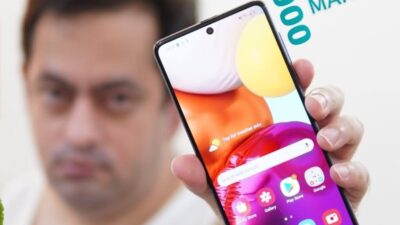It seems that choosing a smartphone is very simple. I decided with the operating system, took the model more and more. And then it turns out that the memory in the phone is not enough, and the frames turn out to be some sort of fuzzy. We sort out all the nuances and tell what is really worth paying attention to.
Operating system
The most common “OSes” – iOS, Android, and Windows.
iOS
Pros
- all new mobile apps come first for iOS
- laconic and intuitive interface
- russified voice assistant Siri
- free calls and SMS for Facetime and iMessage
- The ability to connect all of your Apple devices to a single network
Cons
- older models of iPhone can start to “hang” after iOS update
- There may be difficulties with the development of the free program iTunes: only through it you can download new songs and videos to your smartphone
- smooth and beautiful animation of the interface quickly “destroys” the charge of the battery (animation can be turned off)
Android
Pros
- large selection of smartphones of different brands
- to transfer data to Android easily: open a folder on your computer and copy files there
- “Operating system” owns Google, which means that with Android is open free and easy access to all search engine services: maps, books, “cloud storage”
- changeable interface: setting up an individual lock screen, color selection, and design fonts
- applications are installed not only from the “native” Playstore but also from third-party resources or from a computer
Cons
- The lower the price of a smartphone, the less steep “chips” will be in the system – for the sake of productivity
- older devices based on Android often cannot be upgraded to a new version of “OSes”
- lack of RAM on weaker devices can slow down the smartphone and prevent the installation of programs
Windows
Pros
- voice assistant Cortana works with a large amount of data than helpers iOS and Android
- in the “cloud storage” of the system can move up to 15 GB of files
- free calls and SMS on Skype
- “Not boring” interface: the programs are located in color blocks, the size of the blocks is changing
- synchronized with a computer based on Windows – 78% of people in the world use this “software”
Cons
- the youngest of the three operating systems
- The least number of applications compared to other
- updates “operation” do not come out as quickly as those of competitors
Diagonal screen and resolution
The size of the screen and the quality of the image choose depending on the preferences and the purpose of the purchase.
Screen diagonal
2.4 – 4.7 inches / (60.96 – 119.38 mm)
Pros
- Ideal for communication: the smartphone is not bulky, the text can be typed with one hand
- easily fit in pockets and handbags
Cons
- For many users, the font on small screens seems too small
- The touchscreen does not always work properly
- It can be difficult to hit the desired button with your finger
5 – 6.8 inches
Pros
- comfortable watching movies and TV shows
- sensations from games – as when using the console
Cons
- To process a “wide” image, the battery spends more energy
- It is not very convenient to use for communication: the phone hardly fits in your hands, it’s uncomfortable to hold it by your ear
Screen resolutions
Pay attention to the dependence of the screen resolution on the width of its diagonal. If you choose a smartphone with a large screen, but a small resolution, the image “floats” will be blurred and indistinct. But with HD and Full HD, a widescreen will be very useful.
1280 X 720 PX
- Wait for special visual effects is not worth it
- The screens are not designed to view HD video or download heaped applications
- For those who use the phone for communication and notes
1920 X 1080 PX
- Bright, clear and detailed image
- Some doubt that human vision is able to distinguish HD from Full HD on the smartphone screen
- For those who choose the best
Battery charge
Even an expensive smartphone can fail, discharged at the most inopportune moment. Choosing a dream phone, it is not always necessary to believe loud advertising slogans: “the most powerful” battery does not necessarily provide the device with a long “life” without recharging.
There are two different concepts: the time of work in the standby mode and in the active mode.
Standby time
It assumes how long the battery lasts, if the smartphone is turned on, but not used. At some gadgets, the time of work in a mode of expectation can reach up to 900 with superfluous hours.
Operating time in the activity mode
In this case, the characteristics of the device with direct activity are given: the use of applications and the Internet, photo, and video. Here the figures are much more modest – 16 hours are considered a good indicator, and on average, smartphones can withstand 7-8 hours without recharging. In fact, almost all gadgets are discharged a little faster than the manufacturer indicates.
Memory
RAM
It stores the data of used programs for a while so that you can run several applications at the same time, quickly switch between tabs in the browser and, after answering the call, continue the game from the same place.
1 GB
For those who use clearly in the case.
2 GB
For those who use multiple applications at the same time.
3 GB
For those who are replaced by a smartphone
Built-in Memory
It is responsible for storing files and user data: contacts, notes, SMS-ok, and bookmarks. The more photos, music, and games you want to store on your favorite smartphone, the more capacious the memory card should be. Pay attention to the maximum amount of memory that the phone supports. In most smartphones you can put an additional memory card – it will be cheaper. This opportunity is not available for iPhones and some other smartphones.
8-16 GB
Small volume, for the most necessary.
32-64 GB
Average volume, for standard use.
From 128 GB
Very large volume, for music lovers and gamers.
Processor frequency and number of cores
Two of these technical properties are responsible for the performance of the device. But here “more” does not always mean “better.”
CPU frequency
At the smartphone of the unrecognized brand this characteristic can be declared higher than that of the flagship, but in fact, the latter will be faster. This is due to the fact that the processors themselves are produced by different firms and their indicators are not correlated with each other. Do not be tempted by sky-high gigahertz. Pay attention to the brand of the processor.
1.0 – 1.2 GHz
For the older generation and kids.
1.3 GHz – 1.8 GHz
For ordinary users.
1.8 – 2.0 GHz and higher
For “geeks”.
The processor on 1-1,2 GHz perfectly copes with the basic tasks of the phone: calls, SMS, alarm clock, calendar. Video calls, transfer of high-resolution files and most games will not master.
The processor from 1.3 GHz with ease reproduces music and video of high definition, allows you to play most games, but weakly copes with a dozen simultaneously open applications.
The 1.8 GHz processor has titanic performance: you can mount video, while responding to SMS right in the notification or run a few tricked-up games right away, without turning off the voice recording. However, all the super complicated manipulations quickly put the battery.
Number of Cores
The core is the main functioning part of the processor, something like its “brain”.
Inside the smartphone can be from 2 to 8 cores.
- “More” does not mean “better”: two 8-core gadgets are simply located within the 8-core gadgets. They do not work simultaneously, but they divide tasks among themselves. The presence of additional 4 cores is called to save the charge rather than “disperse” the device.
- “Less” does not mean “worse”: 2 cores have both less powerful smartphones, and a number of models of iPhones, up to the iPhone 6S. Focus on the price: a high-performance device can not cost less than 10 thousand rubles.
Camera
Usually, the two are basic, with a wider resolution, and the front one, used for selfies. The quality of the survey is measured in megapixels. Checked how to remove smartphones with different cameras.
Less than 8 Mp
For the entry level
8 to 12 Mp
Sure average level of shooting
More than 15 Mp
Pictures of very high resolution
A camera with a resolution of up to 8 megapixels is suitable for those who do not use the phone as a camera.
A camera with a resolution of 8-12 megapixel will suit both lovers of Instagram, and those who take pictures for themselves or for business.
A camera with a resolution of 12-20 Mp is a good choice for aesthetes and photographers in search of inspiration.
The camera with the largest number of megapixels does not necessarily make the best photos, but with the least – blurred and fuzzy. The quality of the survey is influenced by the camera matrix, the pixel size and the type of sensor. Focus on the brand and the price of the device: good cameras cannot be cheap.
Number of SIM cards
Two “sims” are convenient for business people who want to distinguish between personal life and work issues. All the rest will be enough for one card.
Housing material
What makes the shell of smartphones?
Plastic – the cheapest, flexible and often durable material.
Housing materials in the smartphone
The metal case takes on the blows from the falls and protects the internal mechanisms of the device.
Smartphone case: plastic, aluminum or glass?
The phone with glass inserts is most often made of special reinforced material. Such models look interesting and aesthetic.
Among the external characteristics of phones, too, there is, from which to choose. Starting from the color of the body and ending with such properties as water resistance or shock resistance. Interesting sensations arise from the use of smartphones with curved screens.
And for those who ignore protective films, there are devices with scratch- proof displays.
General Functionality
Sometimes a phone is needed to just call. Or photographed. Or even do the selfie. If you are looking for exactly this, choose models with improved characteristics for a specific task – you will not have to overpay for extra functionality.
Smartphones with a very good camera –
For those who like to be photographed.
Smartphones that hold a long charge –
For those who are always important to be in touch.
The most powerful smartphones –
For games and watching movies.
Ultra-strong smartphones –
For those who have already broken their phone.
Smartphones with 2 sim cards –
For those who share work and personal life.
Smartphones with a large diagonal –
To replace the PC.



